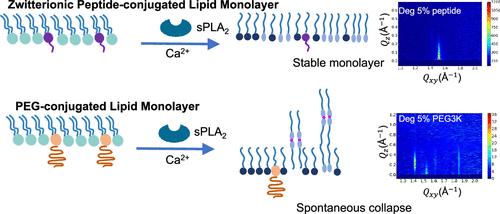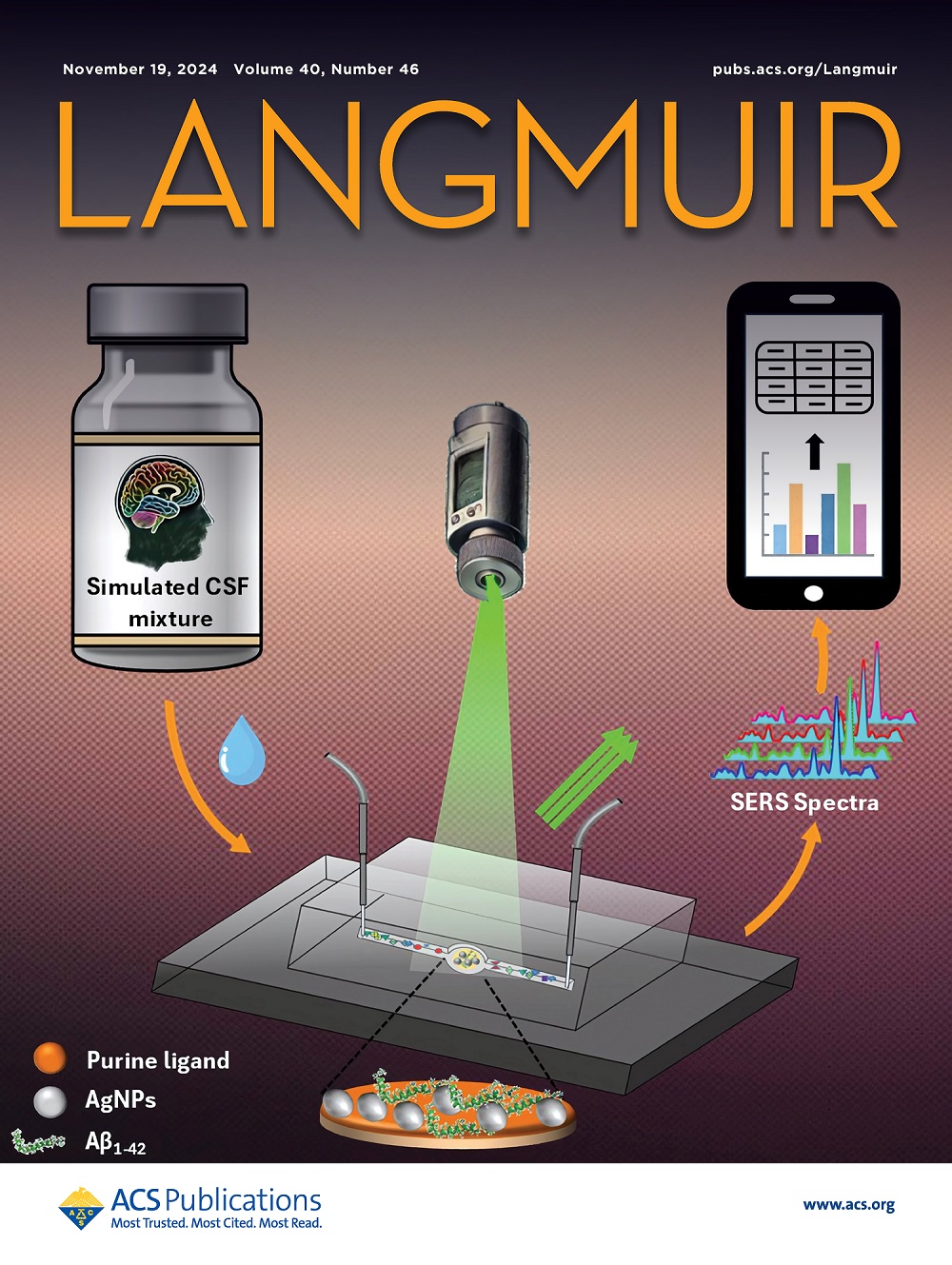Molecular Effects of Zwitterionic Peptide on Monolayer Lipid Membranes upon Enzyme-Catalyzed Degradation
IF 3.7
2区 化学
Q2 CHEMISTRY, MULTIDISCIPLINARY
引用次数: 0
Abstract
Secretory phospholipase A2 (sPLA2), an enzyme overexpressed in numerous diseases, has been used to trigger structural transformations in lipid-based drug delivery systems, enabling payload release at target sites. Zwitterionic peptides are known for their superior antifouling properties, often outperforming poly(ethylene glycol) (PEG) surface modification by resisting protein adsorption. In this study, we examined lipid monolayers at the water–vapor interface on a Langmuir trough, incorporating varying molar fractions of zwitterionic peptide-conjugated lipids or PEG-conjugated lipids. Synchrotron X-ray surface techniques, including X-ray reflectivity and grazing incidence X-ray diffraction, were employed to analyze molecular packing, enzyme adsorption, enzyme-catalyzed lipid degradation, and metabolite reorganization at the interface, and microscopy was used to observe domain morphologies. The results demonstrate that zwitterionic peptides exhibit a significantly greater efficiency than PEG in stabilizing the interfacial monolayer packing structure against enzyme-catalyzed lipid degradation. However, contrary to most studies reporting strong resistance of zwitterionic materials to nonspecific protein absorption, enzyme absorption to the interface, which is interfacial and phospholipids specific, was not impeded by the presence of zwitterionic peptides at low molar ratios (≤10 mol %).

求助全文
约1分钟内获得全文
求助全文
来源期刊

Langmuir
化学-材料科学:综合
CiteScore
6.50
自引率
10.30%
发文量
1464
审稿时长
2.1 months
期刊介绍:
Langmuir is an interdisciplinary journal publishing articles in the following subject categories:
Colloids: surfactants and self-assembly, dispersions, emulsions, foams
Interfaces: adsorption, reactions, films, forces
Biological Interfaces: biocolloids, biomolecular and biomimetic materials
Materials: nano- and mesostructured materials, polymers, gels, liquid crystals
Electrochemistry: interfacial charge transfer, charge transport, electrocatalysis, electrokinetic phenomena, bioelectrochemistry
Devices and Applications: sensors, fluidics, patterning, catalysis, photonic crystals
However, when high-impact, original work is submitted that does not fit within the above categories, decisions to accept or decline such papers will be based on one criteria: What Would Irving Do?
Langmuir ranks #2 in citations out of 136 journals in the category of Physical Chemistry with 113,157 total citations. The journal received an Impact Factor of 4.384*.
This journal is also indexed in the categories of Materials Science (ranked #1) and Multidisciplinary Chemistry (ranked #5).
 求助内容:
求助内容: 应助结果提醒方式:
应助结果提醒方式:


